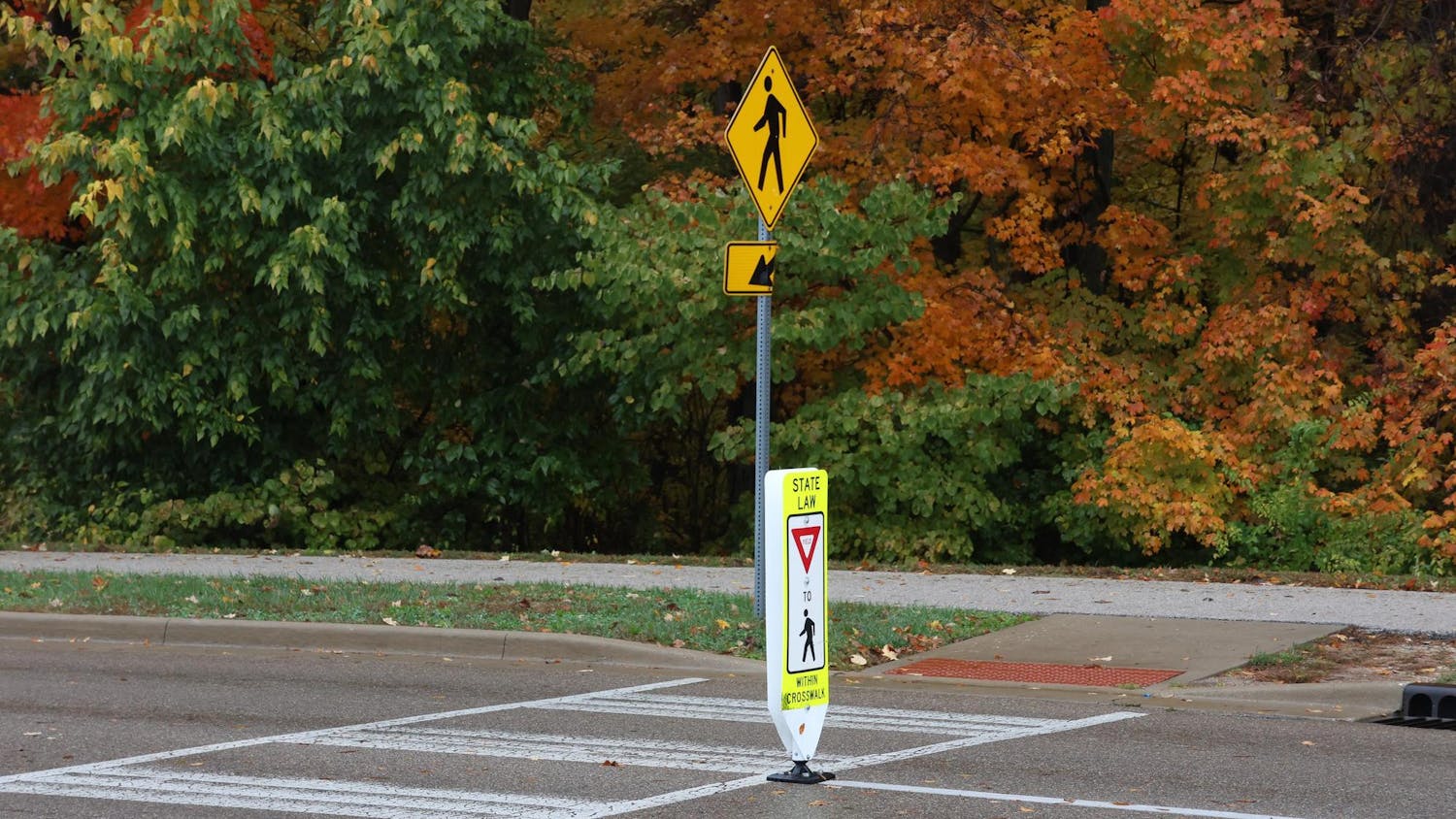Over the past month, bobcat sightings in Bloomington and Monroe County residents have been posted on social media because they've been seen near or on people's property. But according to officials from the Indiana Department of Natural Resources, these sightings aren't unordinary.
DNR Furbearer Biologist Geriann Albers said it’s normal to see bobcats both in the woods and near residential areas.
Albers said bobcats are common around southern Indiana, and the bobcat population is denser in Monroe County because of the area's several forest areas. She said bobcats live off a diet of rabbits, squirrels and mice, explaining why they’re seen in residential areas in Bloomington.
She said bobcats are typically about twice the size of a normal house cat and weigh between 20 and 25 pounds. They have long legs, making them seem larger than they actually are. A bobcat’s fur is reddish-brown or tan with a white belly, according to the DNR’s website. They also often have black spots or streaks throughout their coats. They can live for up to about 12 years.
Albers said the population of bobcats in Indiana, especially in southern Indiana, seems healthy and abundant. Numbers were low in the 1900s due to little restriction on hunting and trapping. Restrictions were put back in place in the 1990s and early 2000s, and the population has risen to a healthy level.
Encounters between people and bobcats aren’t very common, Albers said. Bobcats usually stay away from people and most people are good about not interacting much with the bobcats. However, Albers still recommends people take precautions. She said to keep dogs on leashes and keep cats indoors, not to leave food outside for bobcats, trim back brush so they don’t have places to hide and reinforce their natural fear of humans by spraying them with a hose or making lots of noise when they’re nearby.
Ivan Berkenstock, nuisance wildlife control technician with American Animal Control in Bloomington, said the center doesn’t get many calls about bobcats. He said with the bobcat population rising in Indiana, there are chances for more contact with humans.
He said animal control centers and the DNR can’t do anything about the controlling the population until bobcats actually damage property or they become a nuisance.
The only issues reported with bobcats so far have been vehicle collisions, which have killed some bobcats, according to the DNR’s website. Conflicts between bobcats and livestock or pets are rare, but landowners can request a nuisance wildlife permit to control a bobcat if it causes damage.
Jim Hibbard, the administrator of a Facebook group that monitors bobcat sightings in Indiana, said someone posted a petition in the group on whether there should be a limited season for trapping or hunting for bobcats in the state. Group members were split on the idea.
“Wholesale slaughter for bobcats isn’t part of my agenda,” Hibbard said.
Hibbard said he thinks bobcats should be a top predator in the state, but bobcats don’t have any natural predators of their own, so their numbers need to be managed somehow. He said many hunters in the southern counties with the highest bobcat populations are reporting the loss of whole flocks of turkeys from their properties.
Hibbard said he believes designated counties, such as Monroe County, should have a county-wide limit of around 800 bobcats that can be hunted for a limited part of the year. This shouldn’t be an issue because their pelts can’t be bought or sold without an official tag from the DNR, Hibbard said. Since bobcats are one of the only spotted cats still legal to possess, buy or sell, he said they’re a valuable resource.
“I am glad that they have made a comeback in the Hoosier State,” Hibbard said.




